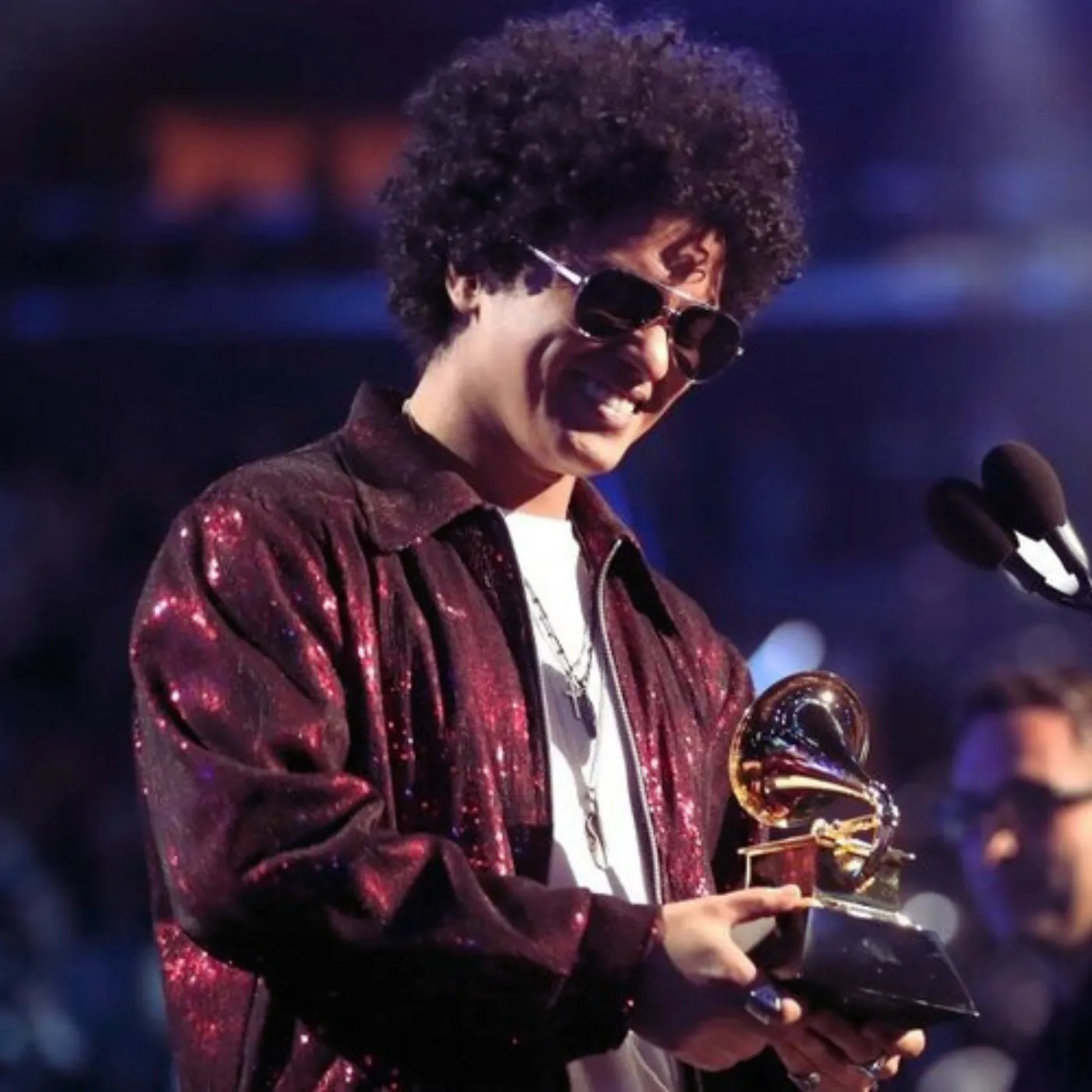

No One Warned Us Bruno Mars’s “When I Was Your Man” Would Hit Harder a Decade Later
In a music landscape overflowing with short-lived trends, auto-tuned singles, and algorithm-chasing releases, one heartbreaking ballad has managed to not only stand the test of time but get even more painful with age: Bruno Mars’s “When I Was Your Man.” Released in 2012 as the second single from his sophomore album, “Unorthodox Jukebox,” the song was already a sensation. But now, over a decade later, it has transformed into something much larger than a chart-topping hit.

It’s become a cultural timestamp, a go-to reference for emotional collapse, and a viral soundtrack to TikTok heartbreak edits that rack up millions of views. The more time passes, the more listeners revisit the track and realize: no one warned us it would age like this.
The Anatomy of a Modern Classic
At its core, “When I Was Your Man” is deceptively simple. A piano. A voice. And a man filled with regret. But Bruno Mars, known for his swagger, showmanship, and crowd-commanding stage presence, stripped all of that away. What was left was raw vulnerability, and it landed like a punch to the chest.
“I should have bought you flowers,” he sings. And in that one line, Mars managed to bottle up guilt, nostalgia, and helplessness so powerfully that fans are still quoting it over a decade later. There’s no beat drop, no production tricks, just emotion on a grand piano.
The Breakup Anthem That Refuses to Die
Social media platforms, especially TikTok and Instagram Reels, have kept this track alive for a new generation. Teens who were toddlers when the song debuted are now creating sad edits, breakup montages, and even mock therapy sessions set to Mars’s aching falsetto.
Why now? Part of the song’s haunting endurance is because it speaks to something universal and permanent. Regret never goes out of style. And “When I Was Your Man” is regret, personified.
According to Spotify data, the track saw a 31% streaming spike in 2023, largely driven by viral trends and nostalgia reels. And Mars? He’s said very little. But maybe he doesn’t need to. The track speaks louder than any press tour.
Critics Hated It—At First
Here’s what makes its rise even more ironic: critics were lukewarm when it dropped. Many said it was “too slow,” “too basic,” or “too sentimental.” But those exact qualities have become its strengths. In a world of chaos, Bruno offered stillness. And stillness hurts more when you’re older.
It wasn’t trying to be trendy. It wasn’t trying to go viral. It was just trying to be honest. And that honesty has aged better than anything else in his discography.
Fan Reactions: “This One Hurts Differently Now”
Go into the comment section of any recent YouTube upload or TikTok clip of “When I Was Your Man,” and you’ll find an avalanche of confessions:
“Didn’t cry back then. Can’t listen now without breaking.”
“This song hits harder when you realize you’re the one who didn’t appreciate her.”
“I’m happily married now. This still ruins me.”
It’s become therapeutic. Not just for those fresh out of heartbreak, but for people who now understand, with time, what the lyrics were really about.

The Bruno Mars Paradox
Bruno Mars is a global superstar with hits like “Uptown Funk,” “24K Magic,” and “Locked Out of Heaven.” But none of those tracks carry the emotional weight of “When I Was Your Man.” It’s the song that his true fans bring up in every comment thread, the one that demands silence during live shows.
And the real kicker? Mars rarely performs it. It’s almost like even he knows the song is too heavy, too personal, too real to slot between upbeat tour setlists. When he does play it live, it becomes a moment. The crowd holds its breath.
The Viral Resurgence
In late 2024, the song had an unexpected moment on Facebook Watch and TikTok when a user posted a black-and-white montage of old relationship photos with the song’s chorus playing in the background. Within 48 hours, it had 13 million views, and the hashtag #WhenIWasYourMan was trending on multiple platforms.
Brands, influencers, and even therapists began referencing the song in their content. You could buy merch with the lyrics, enroll in breakup coaching sessions titled after it, and hear it on late-night radio stations across the U.S. all over again.
This isn’t just nostalgia. It’s emotional branding at its most organic.
The Secret Weapon: Time
There’s something cruelly poetic about how time itself has transformed “When I Was Your Man” from a sad piano ballad into something dangerously personal. Back in 2012, many of Bruno Mars’s listeners were simply too young to fully understand the ache behind the words. They hadn’t yet lost the person they never thought they’d lose. They hadn’t yet composed the “what if” stories that come with heartbreak, regret, and years of silence.
But now? They’ve lived it.
They’ve grown into the song—or rather, the song has waited patiently for life to catch up to them. For those who once hummed along without thinking, it now sounds like a gut punch wrapped in melody. For those who once mocked its vulnerability, it now feels uncomfortably real. “I should have bought you flowers” hits different when you’ve actually stood in a florist’s shop with hands shaking. “Take you to every party ’cause all you wanted to do was dance” no longer reads as hyperbole but as an honest truth that stings in hindsight.
Time didn’t just age the track—it weaponized it.
It turned a top-40 single into a shared emotional archive. Today, people don’t just listen to Bruno Mars sing—they see themselves inside the lyrics. Every line becomes a snapshot of what they failed to say, what they never fixed, and what they left behind. It’s no longer his story. It’s theirs.
Final Thoughts: A Song That Refuses to Let Go
So what happens when a breakup song becomes a cultural artifact?
“When I Was Your Man” has outlived the flash-in-the-pan hits, the TikTok trends, and the overproduced heartbreak anthems of the streaming age. It has stayed relevant not because of algorithms, but because of authenticity. In a music industry increasingly driven by noise, this track thrives on silence—the space between the keys, the breath before the chorus, the crushing pause after each confession.
There’s no auto-tune trickery, no guest rapper, and no explosive beat drop. Just a man, a piano, and the sound of his own emotional undoing.
And that simplicity? That’s the power.

Bruno Mars didn’t build a social media campaign around this song. He didn’t hop on a viral challenge or release a remix to keep it in the charts. Instead, he let the truth do the work. He leaned into the kind of raw vulnerability that terrifies most artists—and the result is a track that refuses to age, or perhaps more accurately, ages right alongside us.
Today, fans don’t just replay the song—they relive their own past every time it comes on. It hurts more now because it knows you better. It knows what you lost. What you couldn’t fix. What you never said.
So is it the greatest breakup song of all time?
Not because of chart positions. Not because of radio spins. But because twelve years later, people still cry to it in their cars. Still send it to exes they’ll never hear from again. Still pause their lives for three minutes and thirty-four seconds of honesty.
And in today’s content-heavy, emotionally light landscape, that might be the rarest, most enduring win of all.


















